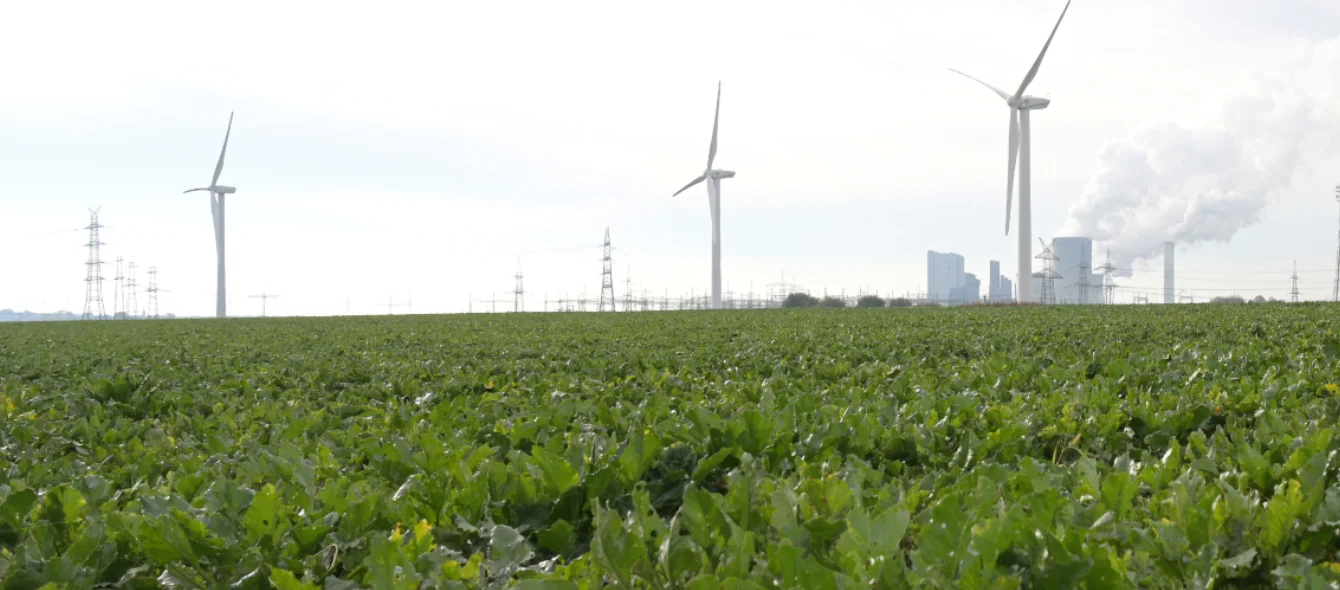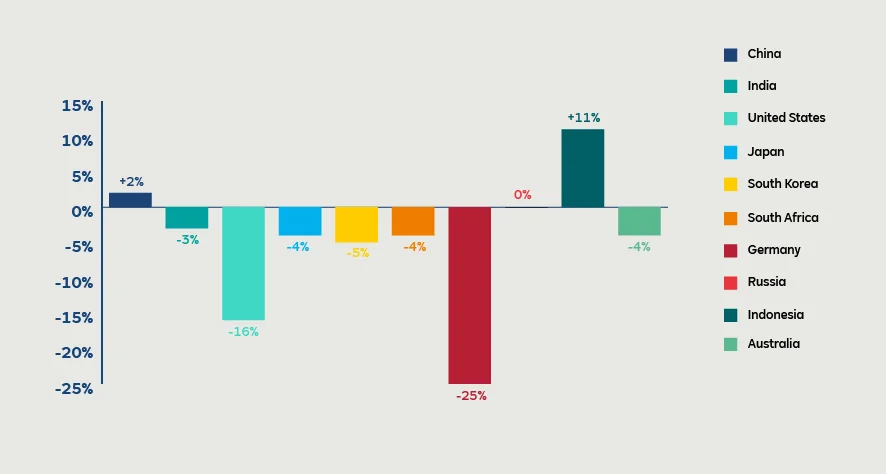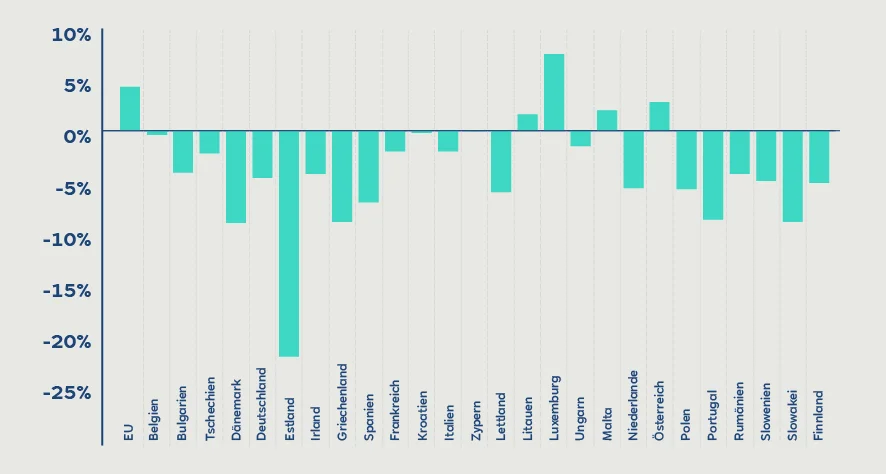In 2019, global greenhouse gas emissions in the power sector dropped, according to the Global Electricity Review published by British think tank Ember. The main reason for this outcome was the decrease of coal-fired power generation, which fell by 16 percent in the USA, and by as much as 24 percent in the EU. However, this was by no means a global trend: China, for example, ramped up its coal-fired power generation and is now, for the first time ever, responsible for more than half of global coal-based capacities. In the following article, en:former sheds some light on the review’s key findings as well as the EU’s current carbon figures.
An increasing number of countries have reduced coal’s relative share of their electricity mix. The impact of this move speaks for itself, with global coal-fired power generation dropping by three percent in 2019, sparking a two percent decrease in carbon emissions in the power sector. In the USA and the EU in particular, a trifecta of new wind and solar farms, low gas prices and a marginal drop in electricity demand resulted in a noticeable decrease of coal-fired power generation. Countries such as South Korea and Japan also recorded a drop in demand for coal due to the recommissioning of nuclear power plants.
EU turns to renewables, USA banks on gas
The study, however, does not consider this decline to be a trend, but generally attributes the development to one-off factors. To date, limiting climate change to 1.5 degrees Celsius has been something of an uphill battle, due to the leading coal-producing countries’ resistance to the energy transition. According to the review, global coal production would need to decrease by 11 percent annually in order to meet international climate targets, which would make considerable investments in climate protection measures and a significant increase in energy efficiency necessary.
According to the review, the EU and the US, in particular, have established themselves as trailblazers when it comes to implementing the objectives of the Paris Climate Agreement, albeit each with their own approach. The EU is therefore focusing largely on expanding renewable capacities. In 2019, 18 percent of European electricity was generated by renewables such as wind and solar – more than twice the global average (8 percent). The USA, on the other hand, is primarily turning to natural gas to replace coal in power generation, as it produces less carbon.
EU carbon emissions significantly reduced
Recent figures reported by the European Union support the findings of the review. They show that CO2 emissions in the EU, above all in the power sector, experienced a substantial drop last year. According to a Eurostat estimate, carbon dioxide emissions from the combustion of fossil fuels (mainly oil and oil products, coal, peat and natural gas) fell significantly, experiencing a 4.3% drop in 2019 compared to the previous year.
Emissions declined in the majority of the 27 EU member states and are expected to increase in only four. The largest decreases were recorded in Estonia, Denmark and Greece. Germany performed slightly better than the EU average, posting a reduction of 4.6 percent.
The Eurostat figures are based on the use of fossil fuels across all sectors. If one simply considers the development seen in the sectors subject to the EU Emissions Trading Scheme (power plants, energy-intensive industry and aviation), however, the emissions cuts are even greater. According to the European Commission, all participants in the EU ETS managed to lower their greenhouse gas emissions by as much as 8.7 percent in 2019 compared to the previous year. The transition from coal to renewable energy and gas has therefore led to a 15 percent reduction in emissions from power production. Emissions from industry decreased by 2%, whereas the aviation sector reported an increase of 1 percent.
“The EU Emissions Trading Scheme is an important instrument to limit emissions and provide incentives for further reductions by attaching a price to CO2,” said Frans Timmermans, Executive Vice President of the European Commission for the European Green Deal, in response to the figures published.
Coal-fired power generation halved in 12 years
The drop in coal-fired power generation becomes all the more impressive when considering a longer period. Over the past twelve years, coal-fired power generation has been cut in half – both in the EU and the US. With the positive side-effect being that carbon emissions in the power sector have dropped by 43 percent in the EU and between 19 and 32 percent in the United States (this wide range is due to the fact that the authors of the review also considered the effects of methane emissions).
Power generation from selected energy sources
Data in TWh; Source: 2020 Global Electricity ReviewPhoto credit: © RWE AG


